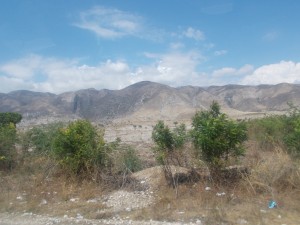 The Guardian recently reported a new initiative by the Haitian government to plant 50 million trees a year, doubling the country’s forest cover by 2016. It is yet to be determined whether this program will succeed where so many other programs have failed. What has been left out of the conversation all together, however, are the steps that need to be taken to prepare the land for reforestation, namely ravine repair and soil remediation.
The Guardian recently reported a new initiative by the Haitian government to plant 50 million trees a year, doubling the country’s forest cover by 2016. It is yet to be determined whether this program will succeed where so many other programs have failed. What has been left out of the conversation all together, however, are the steps that need to be taken to prepare the land for reforestation, namely ravine repair and soil remediation.
Walking around a mountainous community in Petit Goave, Haiti a few weeks ago with our partner Commnity2Community, one of the most prevalent scenes is severe ravine formations. A ravine is a land formation that is created through continual erosion from a water event. They create catastrophic flooding events where the ravines act like channels, funneling water into the valleys below and damaging homes in the process.
The ravines also strip away soil, removing important top layers and leaving behind nutrient-poor soil that can only sustain very hearty plant species. Trees with normal root structures cannot grow in these conditions because what is left behind by nutrient-poor soil is a dry and rocky type of soil – that the roots cannot attach themselves to – causing young trees to rip out during flooding or hurricane seasons.
Overall, the narrative of reforestation has been a shortsighted one. Trees, under a reforestation initiative, are planted over the span of a few months and what happens to the trees afterwards is usually unknown. In order for reforestation programs to work, not only must there be oversight after the trees have been planted, there needs to be oversight even before the trees are planted to make sure the land is resilient enough to support those trees.


About The Author: Daphne Lundi
More posts by Daphne Lundi